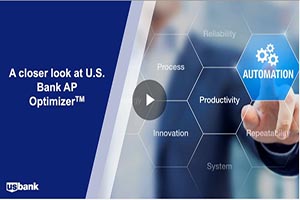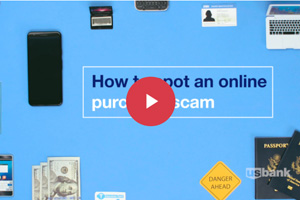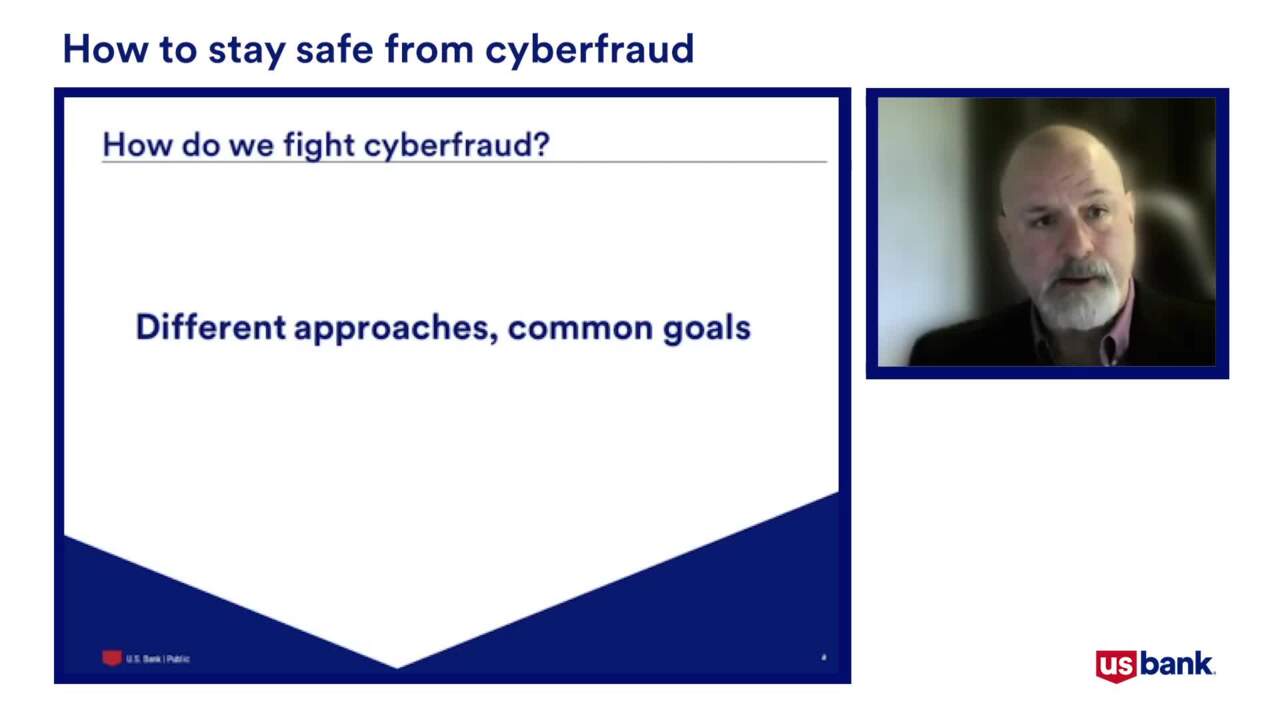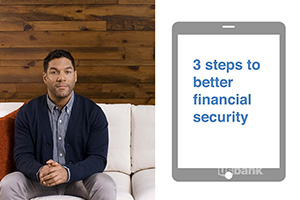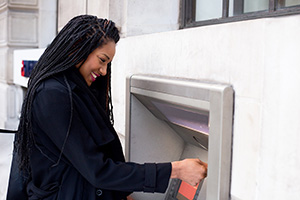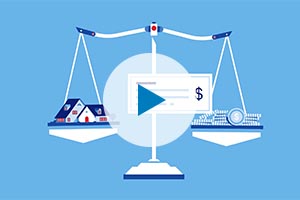4 critical areas where banks can provide much-needed support
Most treasury managers are operating under a business continuity plan as they respond to the COVID-19 pandemic and a new environment where staff members are typically working remotely. No such plan is perfect, however, and as you validate and maintain yours, the need for adjustments will inevitably arise.
Improvements might come in the form of additional training or giving employees automated tools or capabilities that will enable them to work more safely and efficiently from home. And here’s where your bank can help. Below are four critical areas you will need to address during the pandemic and the solutions your bank should be able to offer to shore up your go-forward plans:
1. Accounts payable management
It’s important to eliminate paper in your accounts payable (A/P) processes, given the heightened need for efficiency brought on by the pandemic. Many A/P staffers are working at home now amid concerns about spreading the virus and you will need the ability to quickly transition from a traditional work environment to a remote work environment. Here are just a few bank solutions you should investigate:
- Virtual card services. With virtual cards, companies can request an account number online in real time to pay a supplier electronically and also enhance working capital due to the extended terms on the card.
- Supplier enablement support allowing you to move more vendors from check to electronic payments, including access to an existing network of suppliers that have been paying other companies electronically.
- “Payee choice” type services that enable your consumer payees to visit a branded website with your company logo and choose the method your company will use to pay them, including options such as Automated Clearing House (ACH), Disbursements via Zelle®, RTP® and check.
- The ability to interact with the bank through application programming interfaces (APIs). For instance, you should be able to send a payment instruction directly through the bank’s API – for instance, its ACH or Zelle API – without going through its portal or sending a file transmission.
- Check outsourcing. Companies outsource check creation to their banks to gain efficiency and reduce fraud risk. But now that many firms have experienced their employees not being able to go to the office to print checks, this service is growing in popularity.
2. Accounts receivable management
In the current environment, it’s more important than ever to make it easy for customers to pay you. If you offer an array of electronic payment options, you will get paid faster, which boosts your cash flow, and your customers will get the convenient and safe payment experience they want. Customers looking to avoid service shutoffs and comply with payment terms will appreciate the speed and certainty of electronic payments.
You need the ability to enable your staff to work from home at a moment’s notice and ensure they can process incoming payments without disruption. You should not only consider the equipment they will need but also decide which tools are best used in a remote work environment to maintain efficiency and controls. Solutions your bank should offer include:
- The ability to apply and post any type of payment, including the various emerging electronic payment options.
- Electronic billing. Your bank should be able to help you establish a secure website that your customers can visit to access their bills and initiate payments.
- Remote deposit capture. You should be able to capture an image of a check and deposit that check into your bank account remotely using a smartphone. In addition, your bank should provide options for depositing larger volumes of checks via scanners or lockbox services.
- An integrated receivables platform that offers remittance reassociation and can automate accounts receivable processes and cash application to reduce dependency on staff being in the office to perform manual posting.
3. Liquidity management
One of the most pressing challenges for any organization during this coronavirus crisis – indeed, the key to survival for some – is maintaining access to enough liquidity. Here are some liquidity solutions that your bank can bring to bear as you face the economic downturn created by COVID-19:
- Basic depository products such as checking, savings and money market accounts that can provide fast, easy access to your excess cash. You can ensure that you receive monthly bank statements in a timely manner by having them delivered through your online banking portal.
- Convenient information reporting that provides visibility into your cash positions, so you always know how much cash you have and where it resides. At a time when you may be working remotely, your bank should be able to provide you with a choice of access devices, including mobile phone and desktop and tablet computer.
4. Fraud prevention
Minimizing fraud is a critical part of any strategy to preserve cash. Unfortunately, in difficult times like these, we tend to see an increase in fraud attempts, making fraud mitigation efforts even more important. Here are some solutions that should be available through your bank:
- Updates on new fraud schemes you should be monitoring, including education on red flags that can alert you and your employees to COVID-19 related email phishing scams.
- Payment fraud protection services, including positive pay check reconciliation, ACH positive pay and debit blocks, and online and mobile alerts to potentially fraudulent transactions.
- Payment validation through an online banking portal. Your bank should be able to help you validate that each payment you send through a payment network is directed to the designated payee. For instance, let’s say you are sending a payment through ACH. You can use your online banking portal’s validation function to confirm the payee’s name matches the account number you were provided. You key in the name and account number and receive a score suggesting the probability of whether the two match. This type of service works for transactions across different account-based payment types and whether you’re trying to validate a business account or a consumer account.
- Behind-the-scenes fraud-detecting technology. Supported by machine learning, such technology evaluates each of your outgoing payments and flags those that fall outside normal parameters or meet other criteria that suggest a higher level of risk.
Touchless implementation
As you look to adopt solutions across these four areas during the pandemic, another value your bank may be able to offer is touchless implementation.
Touchless implementation allows you to initiate new banking services faster and without having to access office printers and scanners. Banks are starting to offer electronic signature and electronic document exchange capabilities that speed service implementation, accommodate working from home and, at a time when there is concern about contracting COVID-19, don’t require you and your employees to touch paper handled by others.
Solutions for the “new normal”
The COVID-19 pandemic is likely to be one of the most challenging crises your business will ever face. To successfully navigate to the other side of this disruptive environment, you need to be proactive and take stock of all the solutions your bank can offer.
Visit our COVID-19 site for updates, insights and resources you need to navigate the changing environment. You can also find ideas for responding to the pandemic by accessing our webinar, “A Look at Payments in Times of Change.”
For more information contact U.S. Bank.




















